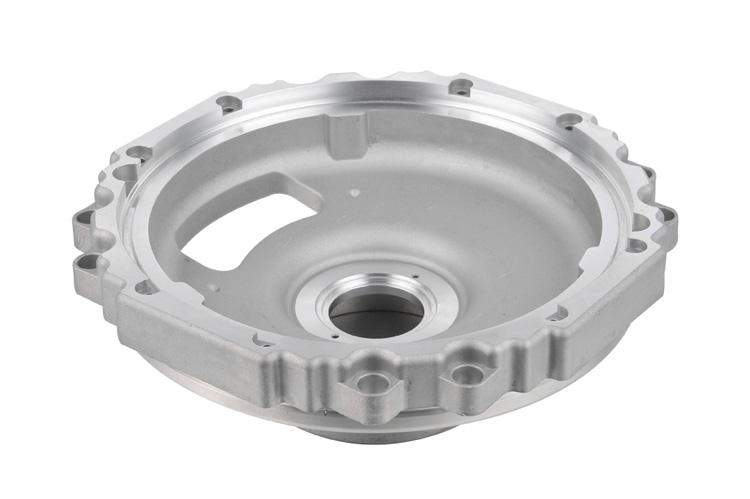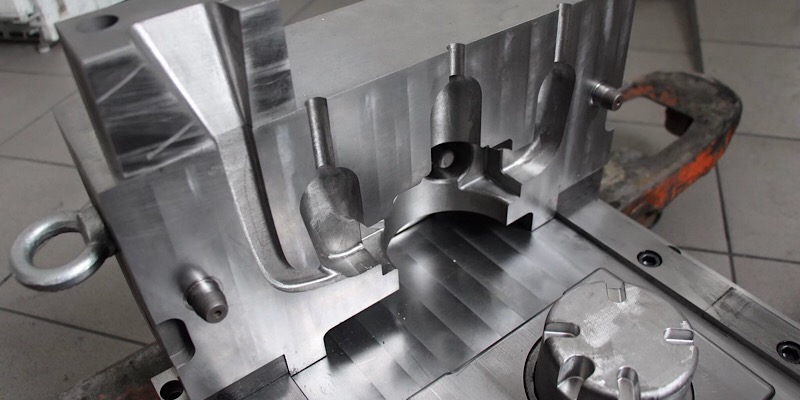Exploring the Versatile Utilizes and Applications of Aluminum Castings in Modern Industries
Aluminum spreadings have actually ended up being indispensable to different modern markets as a result of their distinct buildings. They use significant benefits in weight decrease, thermal conductivity, and corrosion resistance. From automobile innovations to applications in consumer goods and building, their flexibility is remarkable. Yet, the real level of their impact extends beyond immediate benefits, meaning more comprehensive implications for sustainability and effectiveness. What exists in advance for aluminum castings in an ever-evolving commercial landscape?
Automotive Market Innovations
The automobile sector has significantly accepted aluminum castings to boost automobile efficiency and performance. By making use of aluminum, producers can create lighter components, which add to enhanced gas economy and reduced discharges. Trick applications include engine blocks, transmission instances, and structural parts, where the material's strength-to-weight proportion supplies resilience without adding excess weight.
Aluminum spreadings additionally use superior thermal conductivity, which helps in better warm dissipation, thus improving engine efficiency. Innovations in casting innovations, such as die casting and sand casting, enable the production of complex geometries, allowing for ingenious styles that enhance area and functionality.
The recyclability of aluminum straightens with sustainability goals in the auto market, promoting eco pleasant methods. As the industry remains to introduce, using aluminum spreadings is most likely to broaden, driving further advancements in automobile design and effectiveness.
Aerospace Applications and Improvements
While the aerospace sector remains to prioritize weight reduction and fuel efficiency, aluminum spreadings have emerged as an essential material selection for different applications. Their light-weight nature, coupled with high strength-to-weight proportions, permits significant improvements in airplane efficiency and effectiveness. Aluminum castings are typically utilized in structural components, such as body structures and wing parts, where decreasing weight is crucial.
Recent advancements in aluminum spreading innovations, including enhanced alloy formulas and precision casting strategies, have better boosted the product's performance capabilities. These developments enable the production of complex geometries and detailed designs while preserving structural integrity. Additionally, aluminum's superb corrosion resistance guarantees long life and reliability in extreme aerospace atmospheres.
As the aerospace industry significantly welcomes sustainability, aluminum castings provide a recyclable solution that aligns with eco-friendly practices, making them a critical component in the development of next-generation airplane.
Durable Goods and Everyday Products
As customers progressively look for light-weight yet resilient products for day-to-day products, light weight aluminum castings have actually obtained appeal in numerous customer items. The unique buildings of light weight aluminum, including its resistance to corrosion and excellent thermal conductivity, make it a perfect choice for things like cooking equipment, house devices, and outdoor equipment. Aluminum cast pots and pans supply also warmth circulation, enhancing cooking effectiveness. Furthermore, making use of aluminum in things such as bike frames and baggage guarantees an equilibrium between toughness and transportability. Manufacturers value aluminum castings for their flexibility, as they can be conveniently molded into complex forms while preserving architectural honesty. In addition, the capacity to reuse light weight aluminum without deteriorating its buildings straightens with growing customer choices for lasting products. Overall, aluminum spreadings are integral to the production of durable, functional, and cosmetically pleasing durable goods, meeting the demands of modern lifestyles.
Building And Construction and Architectural Uses
Light weight aluminum castings have ended up being a vital component in building and building layout, specifically because of their stamina and light-weight nature. These residential properties make light weight aluminum an ideal option for different applications, including architectural aspects, exteriors, and attractive attributes - Metal Castings. Builders and engineers progressively utilize light weight aluminum spreadings for home window frames, doors, and roof covering systems, boosting both capability and visual appeals. The product's resistance to rust better prolongs its lifespan, lowering upkeep costs and making certain longevity in varied ecological problems
Aluminum can be conveniently formed into detailed styles, enabling for ingenious architectural expressions. Its convenience assists in the production of personalized pieces that meet particular layout requirements, from elaborate railings to intricate supports. As sustainability ends up being a priority, light weight aluminum's recyclability contributes to its allure in green construction practices. Overall, light weight aluminum castings are transforming the building and construction market by giving light-weight, resilient, and visually appealing solutions.
Electronic and electrical Components
Light weight aluminum spreadings play an essential duty in the production of light-weight electrical units, which improve portability and effectiveness in numerous applications. Additionally, their excellent thermal conductivity makes them excellent for warmth sinks, ensuring peak performance and durability of electronic parts. Aluminum's conductive properties contribute to its use in numerous electrical conductors, emphasizing its significance in modern innovation.
Lightweight Electric Units
Light-weight electric enclosures play a crucial role in safeguarding delicate digital parts from ecological aspects and physical damages. Built from aluminum spreadings, these units are valued for their strength-to-weight proportion, making them optimal for numerous applications throughout sectors. Their light-weight nature aids in lowering overall system weight, which is essential in mobile and mobile electronic devices. Moreover, aluminum's corrosion resistance boosts durability, extending the lifespan of the encased elements. The capacity to mold light weight aluminum right into complicated forms enables tailored layouts, dealing with certain requirements while making sure efficient warm dissipation. Furthermore, these rooms can be easily integrated right into existing systems, supplying adaptability and versatility in modern technical settings. Overall, lightweight aluminum units considerably add to the performance of electronic tools.
Warm Sinks and Conductors
While lots of materials are made use of in electronic company website parts, light weight aluminum spreadings attract attention for their performance in warmth management as warm sinks and conductors. Their excellent thermal conductivity permits effective warm dissipation, which is important in preventing the overheating of digital tools. Aluminum's lightweight nature even more boosts its suitability for applications where weight is a substantial element, such as in aerospace and auto industries. Additionally, aluminum spreadings can be conveniently formed into complicated forms, offering design adaptability for maximizing thermal efficiency. The deterioration resistance of light weight aluminum also adds to the long life and integrity of these parts in various environments. As innovation advances and devices come to be more small, the need for efficient heat management services, like aluminum spreadings, proceeds to grow.
Marine Industry Application
The aquatic industry increasingly relies on light weight aluminum spreadings for their phenomenal longevity and deterioration resistance. These buildings make aluminum an excellent selection for various applications, consisting of watercraft hulls, engine parts, and aquatic equipment. The light-weight nature of light weight aluminum spreadings makes it possible for boosted fuel efficiency and simpler maneuverability in watercraft, which is vital for both industrial and leisure vessels.

Aluminum spreadings also give considerable expense benefits as a result of their lengthy lifespan and reduced maintenance requirements, minimizing the overall functional expenditures for aquatic operators. Furthermore, the convenience of aluminum enables complex layouts that can satisfy details performance needs.
Suppliers in the aquatic sector make use of sophisticated spreading methods to generate complicated forms, making certain that elements fulfill rigorous safety and security and performance standards. As the need for high-performance aquatic vessels expands, aluminum castings are placed as a vital product in boosting the capability and durability of aquatic equipment.
Sustainability and Recycling in Light Weight Aluminum Casting

Aluminum Recycling Process
Reusing light weight aluminum plays an essential role in lessening ecological impact and conserving sources within the spreading sector. The light weight aluminum reusing procedure begins with the collection of scrap aluminum, which can include old components, manufacturing waste, and post-consumer products. This scrap is after that arranged, cleansed, and shredded right into small items to assist in melting.
Once prepared, the aluminum scrap is thawed in a heating system at reduced temperature levels than main aluminum manufacturing, substantially lowering power intake. The molten aluminum is after that cast right into ingots or other shapes for reuse in numerous applications - Wisconsin Aluminum Foundry. This closed-loop system enables the reliable healing of aluminum, preserving its properties while reducing the demand for virgin materials. The reusing process is a critical part of sustainable techniques in light weight aluminum spreading.
Ecological Advantages
While light weight aluminum casting plays a crucial duty in various sectors, its environmental advantages are particularly remarkable relating to sustainability and source preservation. The light-weight nature of aluminum adds to energy performance learn this here now in transportation, lowering fuel usage and exhausts. Additionally, light weight aluminum casting promotes the usage of recycled materials, significantly reducing the energy required for manufacturing contrasted to main light weight aluminum. This reusing process decreases waste and lessens the environmental influence linked with mining and refining resources. Aluminum is 100% recyclable without deterioration of its properties, promoting a sustainable lifecycle. By selecting light weight aluminum spreading, sectors can greatly decrease their carbon footprint while promoting resource performance, making it an important option in the pursuit of eco-friendly manufacturing practices.
Closed-Loop Equipments

Frequently Asked Concerns
What Are the Trick Conveniences of Light Weight Aluminum Castings Over Other Products?
Aluminum spreadings use lightweight homes, superb rust resistance, and high strength-to-weight ratios. They can be quickly molded into complex shapes, offer excellent thermal and electric conductivity, and are economical, making them more suitable over several alternative products.
Exactly how Is the Light Weight Aluminum Casting Refine Ecologically Friendly?
The aluminum spreading process is eco-friendly because of its recyclability, low energy consumption, and lowered waste production. Its capacity to use recycled products decreases the carbon impact, promoting sustainability within making practices.
What Are Typical Challenges in Light Weight Aluminum Spreading Manufacturing?
Common obstacles in aluminum casting manufacturing consist of maintaining dimensional precision, taking care of thermal contraction, stopping defects like porosity and inclusions, making certain appropriate mold design, and maximizing manufacturing efficiency while lessening material waste and ecological effect.
Exactly How Do Light Weight Aluminum Castings Compare in Expense With Other Manufacturing Techniques?
Aluminum castings generally use competitive prices contrasted to various other manufacturing methods, specifically for medium to high-volume production. Their lower first tooling costs and effective product use can her latest blog lead to positive business economics over time.
What Future Trends Are Anticipated in Light Weight Aluminum Casting Technology?
Future patterns in aluminum casting technology are prepared for to include developments in automation, enhanced alloy make-ups, improved recycling approaches, and the assimilation of 3D printing, all focused on increasing performance, lowering expenses, and minimizing ecological influence.
Current improvements in aluminum spreading modern technologies, consisting of boosted alloy solutions and precision casting strategies, have additionally improved the product's efficiency abilities. Light weight aluminum spreadings have actually ended up being an important component in building and construction and architectural style, specifically due to their strength and lightweight nature. The aluminum reusing process begins with the collection of scrap light weight aluminum, which can include old components, producing waste, and post-consumer products. When prepared, the light weight aluminum scrap is thawed in a furnace at reduced temperatures than main light weight aluminum production, significantly decreasing power intake. Additionally, light weight aluminum casting promotes the use of recycled products, considerably decreasing the energy required for manufacturing compared to primary light weight aluminum.